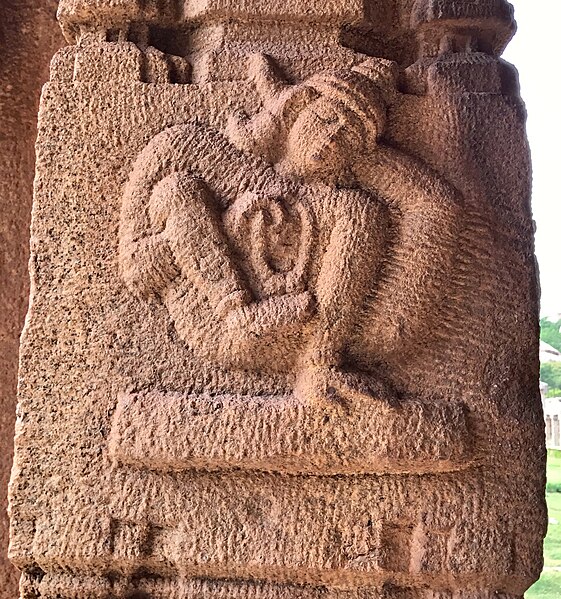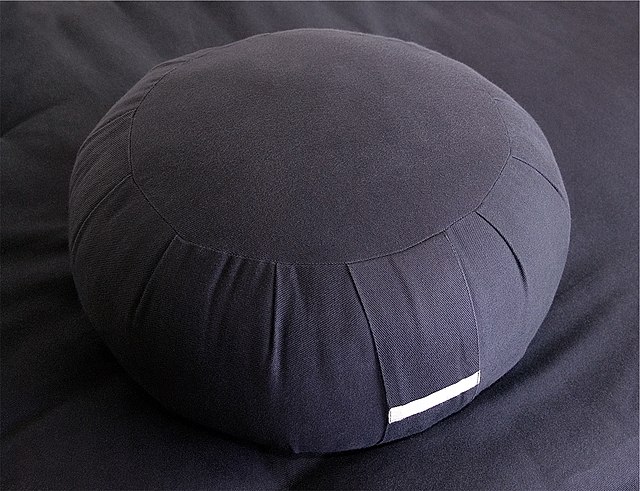An āsana is a body posture, originally and still a general term for a sitting meditation pose, and later extended in hatha yoga and modern yoga as exercise, to any type of position, adding reclining, standing, inverted, twisting, and balancing poses. The Yoga Sutras of Patanjali define "asana" as "[a position that] is steady and comfortable". Patanjali mentions the ability to sit for extended periods as one of the eight limbs of his system. Asanas are also called yoga poses or yoga postures in English.
Asanas in varied contexts. Left to right, top to bottom: Eka Pada Chakrasana; Ardha Matsyendrasana; Padmasana; Navasana; Pincha Mayurasana; Dhanurasana; Natarajasana; Vrkshasana; Yashtikasana
Mould of Pashupati seal from the Indus Valley civilization, c. 2500 BC, its central figure in a pose resembling Mulabandhasana.
A page from Patanjali's Yoga Sutras and Bhasya commentary (c. 2nd to 4th century CE), which placed asana as one of the eight limbs of classical yoga
Relief statue in Achyutaraya temple, Hampi, Karnataka showing an unidentified hand-balancing asana, 16th century
Meditative postures or meditation seats are the body positions or asanas, usually sitting but also sometimes standing or reclining, used to facilitate meditation. Best known in the Buddhist and Hindu traditions are the lotus and kneeling positions; other options include sitting on a chair, with the spine upright.
Siddhasana is an ancient meditation seat.
Padmasana or Lotus pose is among the twelve meditation asanas named in the Bhasya commentary accompanying the Yoga Sutras of Patanjali.
A zafu meditation cushion, often used in Buddhist practice
Buddhist monk seated in Seiza. Hōkō-ji temple, Japan








